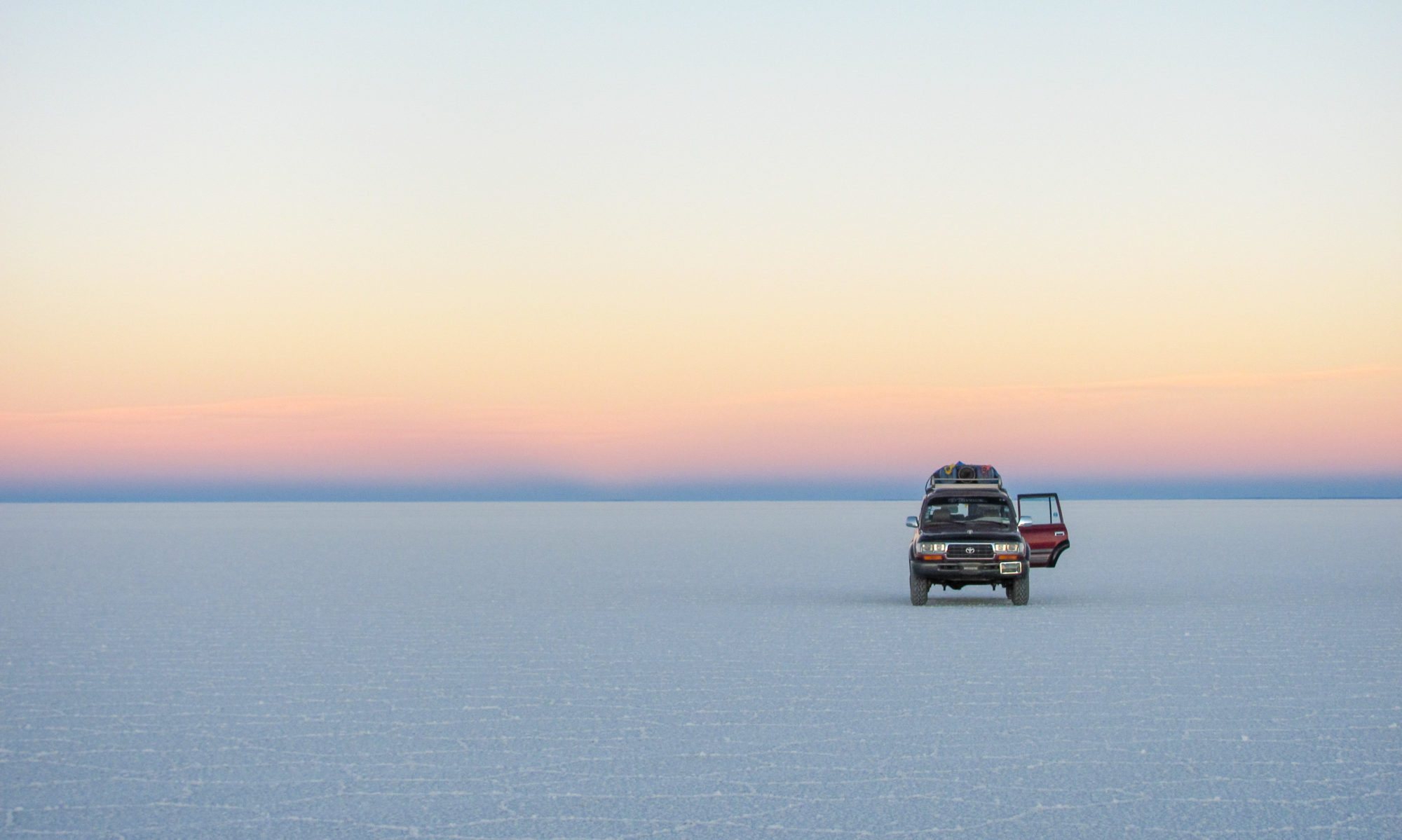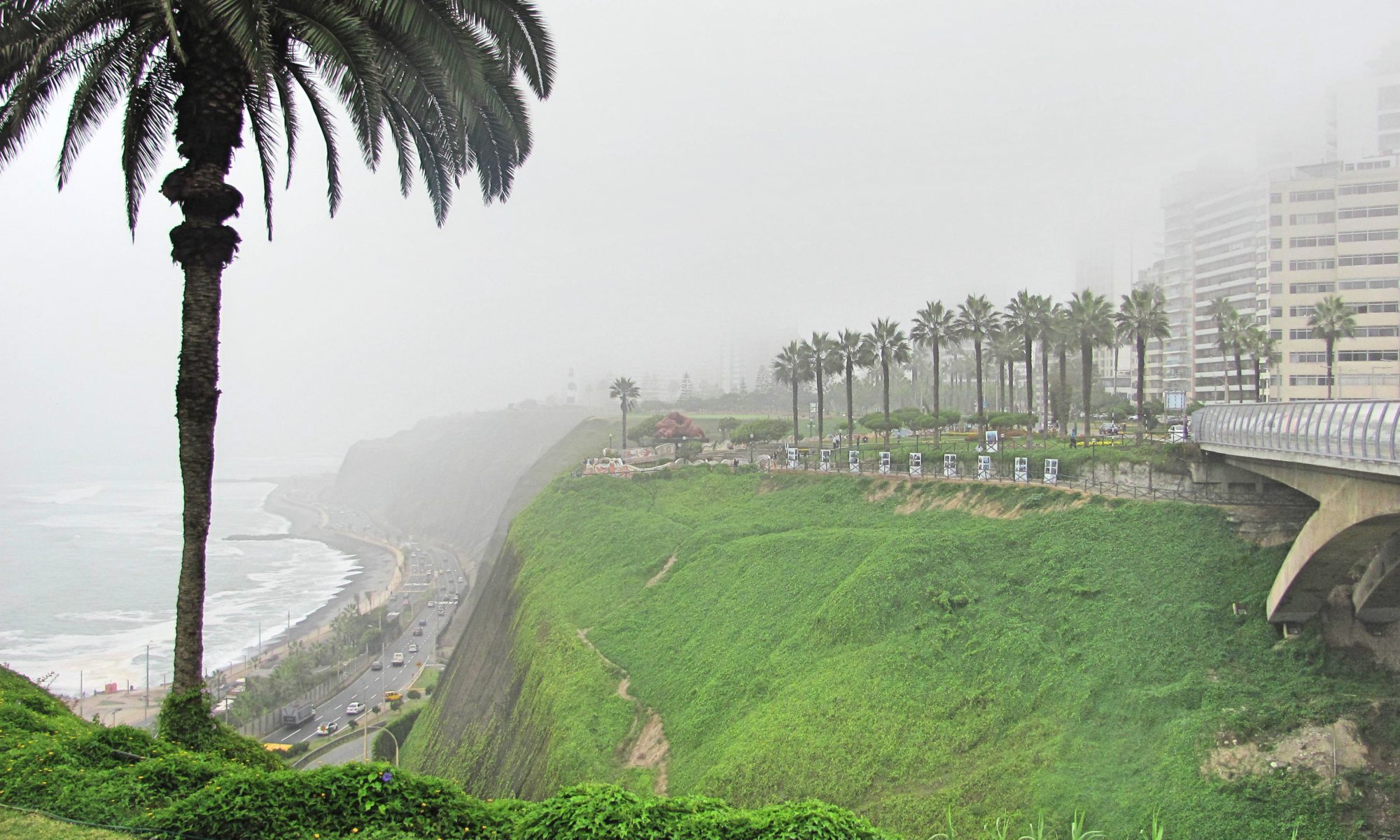Of all places in Peru, its capital Lima is by far the most urban and sophisticated. Many travelers that visited told me that Lima was not really worth the time except that it had the convenience of one of the biggest international airports in South-America. I disagree. They simply didn’t know what to do in Lima. The city offers world-class cuisine, beautiful neighborhoods, an interesting colonial heritage and the best clubbing in the country. Staying a few days while eating delicious Ceviche and fighting off a jetlag after a long-haul flight is certainly not a bad idea!
– What to do in Lima –
Lima hosts over 10 million inhabitants and is divided up into different neighborhoods (‘barrios’) all with their own character and features who all function quite independently. As each neighborhood is so different it makes only sense to tell you what things to do in Lima neighborhood by neighborhood.
Going from one barrio to the other is simple. You wave down a taxi and go. Because 1 in 7 cars in Lima functions as a taxi most cars that pass will take you anywhere for a few soles. A word of warning for taking taxi’s after dark: only take registered taxis! Lima is well known for its opportunistic crimes and on my first night in Lima a roommate in my hostel (a tall Dutch guy) got robbed by a taxi-driver after going out. During the day-time any taxi will generally be fine but take care anyways when traveling alone. Being robbed is not one of the fun things to do in Lima.
Central Lima
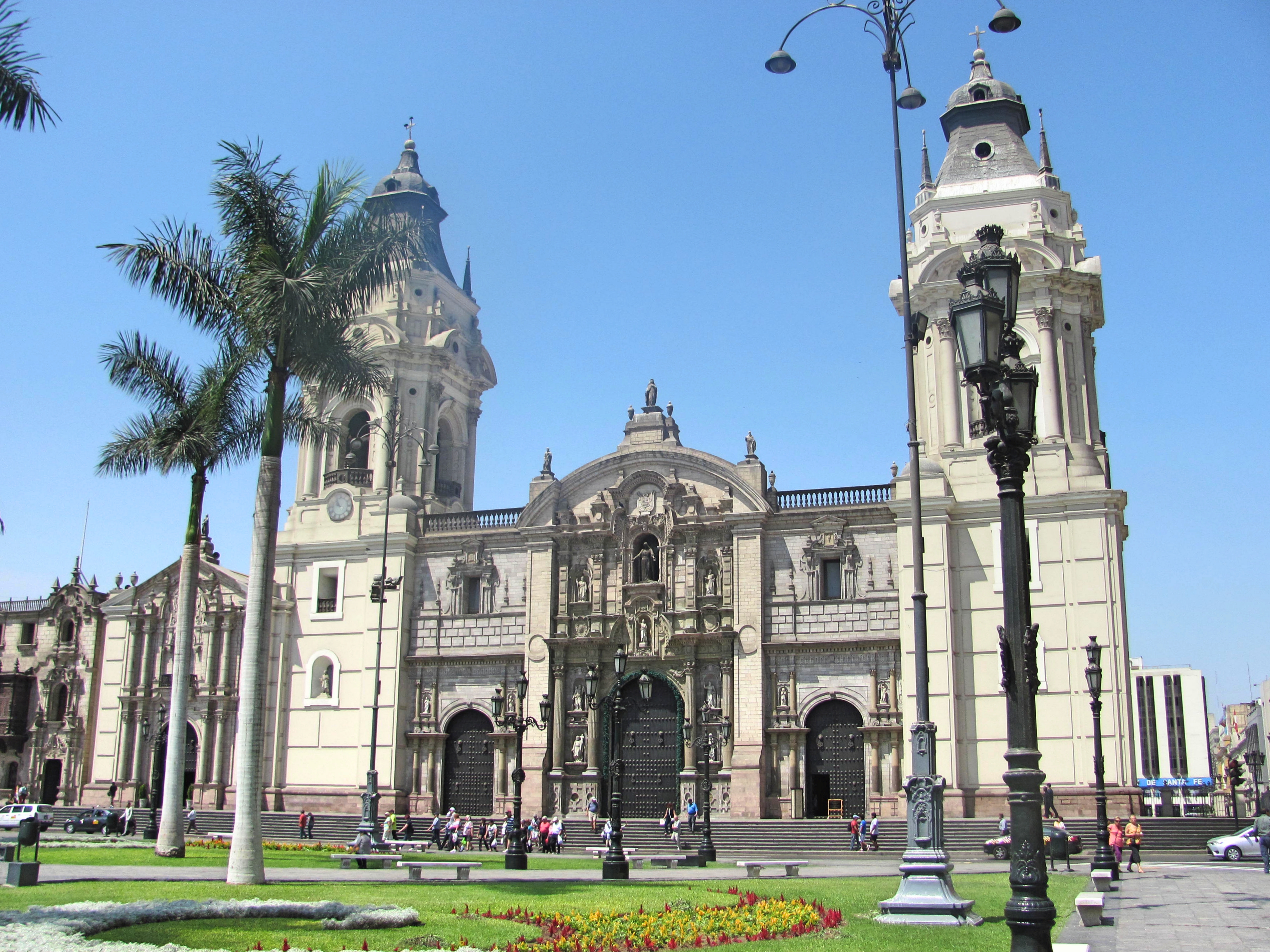
So starting with the old town, what to do in Central Lima? Central Lima is the best place to find out more about the colonial heritage of the city as this place hosts the best museums and old colonial architecture. A lot of buildings are destroyed because of regular earthquakes but I still found it worthwhile.
Walking around the collonial streets
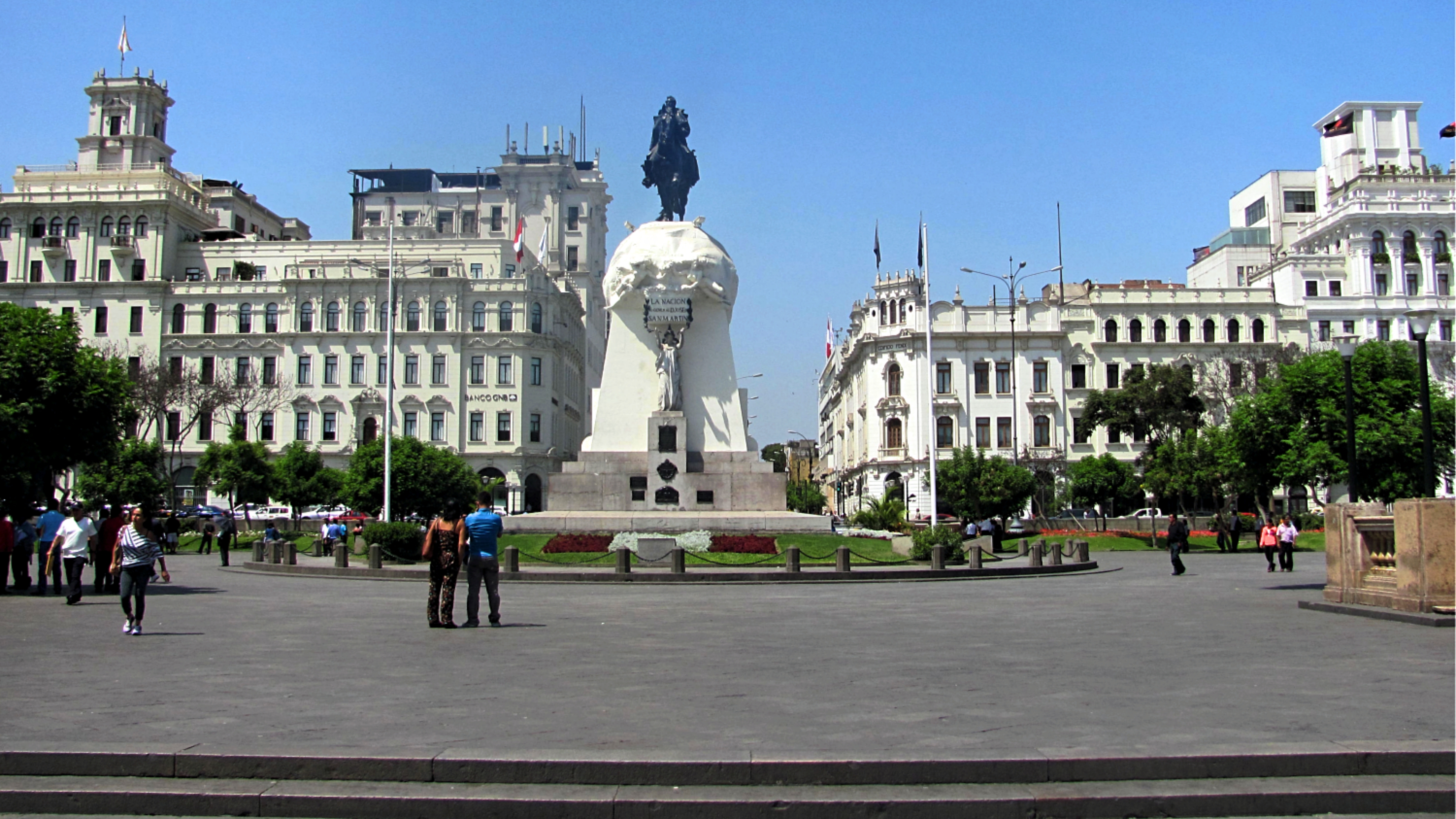
The easiest way is to just walk around and the lonely planet walking tour offers an excellent starting-point. You don’t need to book one of the guided Lima tours.
Make sure you get to see the Plaza de San Martin,a beautiful little square. Plaza de Armas, the old heart of the city. Plaza Bolivar with the old congressional building, Museo de La Inquisicion, a very interesting museum about the inquisition-time and Barrio Chino. Yes you guessed correctly: china-town.
In the past all Chinese people where forced to live here together and they never left. Expect people chattering in Mandarin, old Chinese men playing checkers on the street and lots of Chinese buildings and temples.
Museo Larco offers a huge collection of erotic pottery that you can visit at night.. I know it sound quite kinky but I am afraid I have to disappoint you here. Its mainly just a classic museum filled with a lot of old broken pots. Not too bad but because many people recommended this museum to me I had high expectations and left slightly disappointed.
Most churches in Lima do not ask for an entrance fee so it is also a good idea to pop into every church you pass by. There are a lot of them.
The old colonial buildings, churches and museums make for an excellent day-visit but Central Lima is not the place where you want to stay the night. A far better option is Miraflores, Lima’s sophisticated upper-class area.
Miraflores
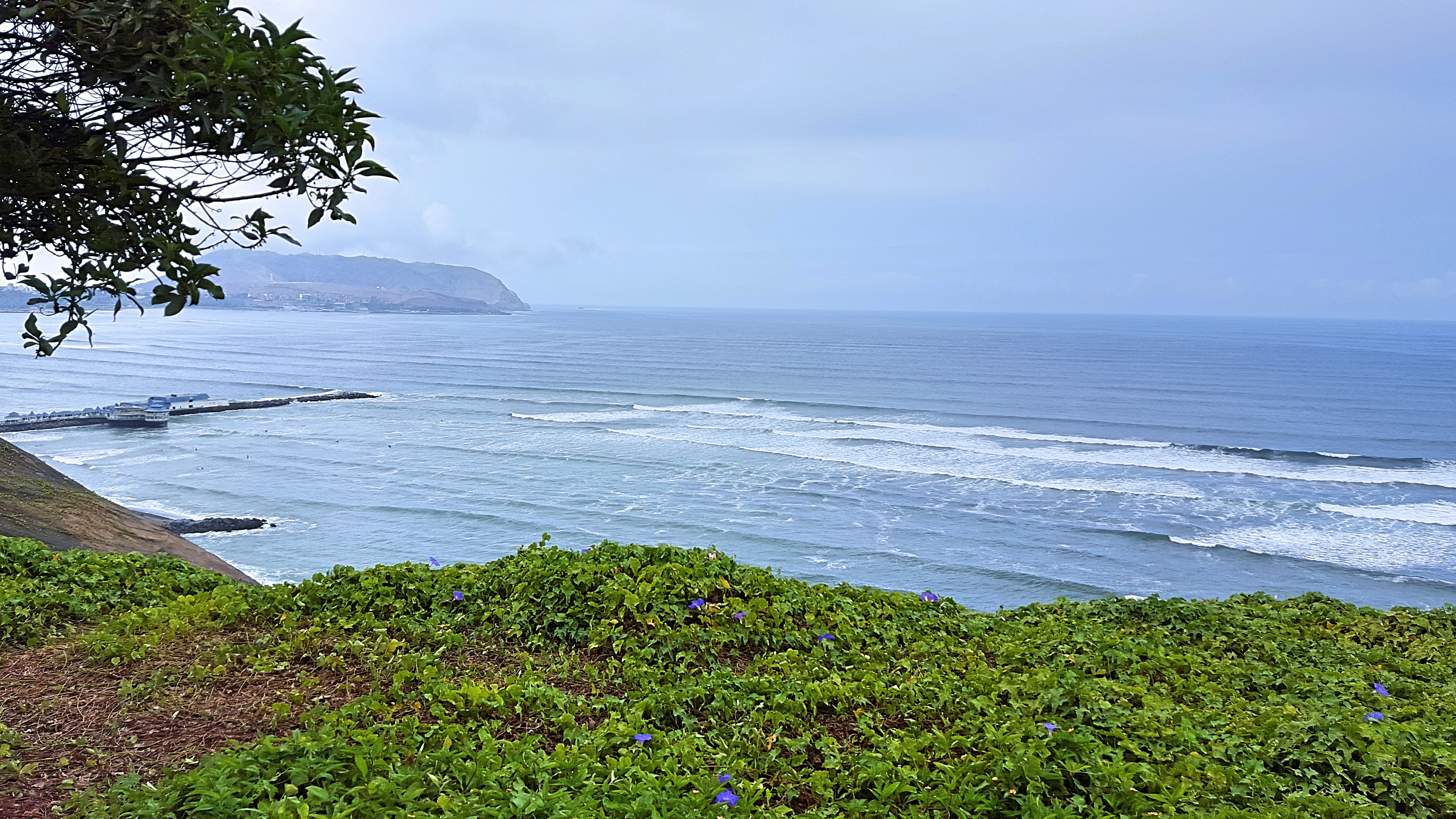
Miraflores is the place where all the middle-upper class people live and where most travelers stay the night. It hosts all the good restaurants, eateries, shopping malls and the best night-life area in general. The best place to stay is around the Parque de Kennedy. The streets around this park are littered with restaurants, eateries, cafes and also a few places to go dancing. The best hostels are also situated in this area and this is generally where you want to be when the sun dips down into the ocean.
The Cat Park
During the day Miraflores also got a lot to offer. And one of the obligatory things to do in Lima is visiting the cat park. Parque de Kennedy is called ‘the cat-park’ because it is the home of literally hundreds of cats. And the park isn’t that large. The good thing: these are not scrawny street-cats but they are fed and medically checked by the municipality of Lima. Yes, they are okay to pet!

Strolling down Malecon Balta brings you to the well known ‘Parque del Amor’, this well-known ‘park-of-love’ is a bit mushy-gushy and filled with kissing couples trying to make a good selfie with all the heart-shaped statues but a pretty park nevertheless. Also a perfect place for a morning run as it has wide paths all along the cliffs parallel to the Circuito de Playas down at sea-level, which can be your way back. Find your way down the cliffs and you’ll end up on the beach which offers decent surfing. Gear and lessons are offered at the beach. The climb back up however ensures you of a stiff butt the following day!
Shopping in Centro Larcomar
If you are looking for a good place to go shopping or just need a free clean toilet, Centro Larcomar is the place to go. Also check out the small coffee-place on the bottom-floor. A friend of mine who lives in Lima brought me here and not only is the coffee superb but it is set up as a sort of museum so you’ll get an insight of coffee making both in Peru and in general.
Huaca Pucllana
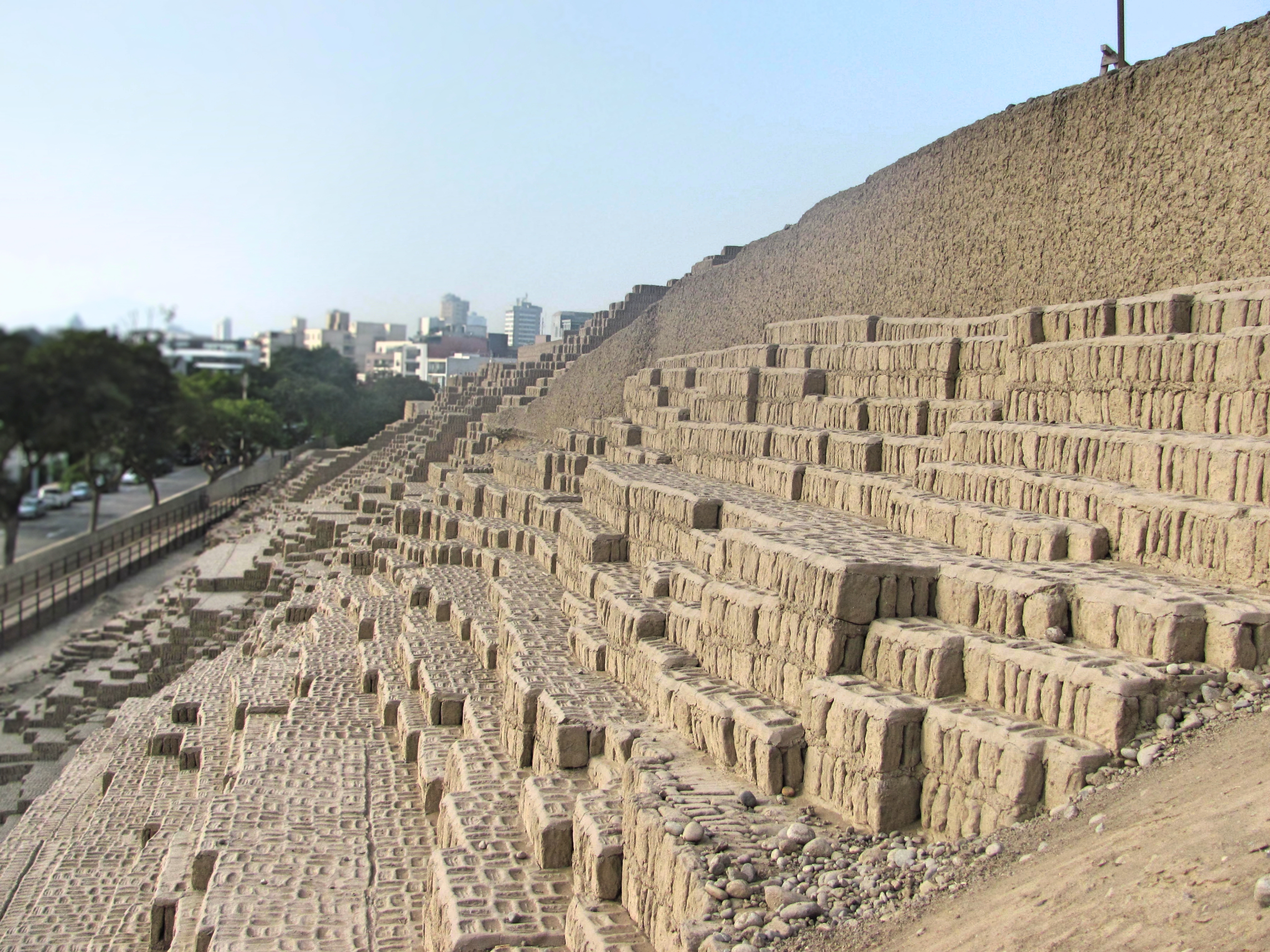
Totally different but very interesting is Huaca Pucllana. 20 min walk north-west from the Parque de Kennedy. Huaca Pucllana is the collection of old ruins of a city that was build by the Lima people many decades before the Inca’s arrived. As everywhere in Peru, a student-ID cuts the entrance fee in half (15 soles) that includes an English-spoken guided-tour. The ruins also host a small petting-zoo and the guide will explain you a bit about the domestic flora and fauna which is rather interesting to know when you venture further into Peru and see these animals (and plants) in the wild!
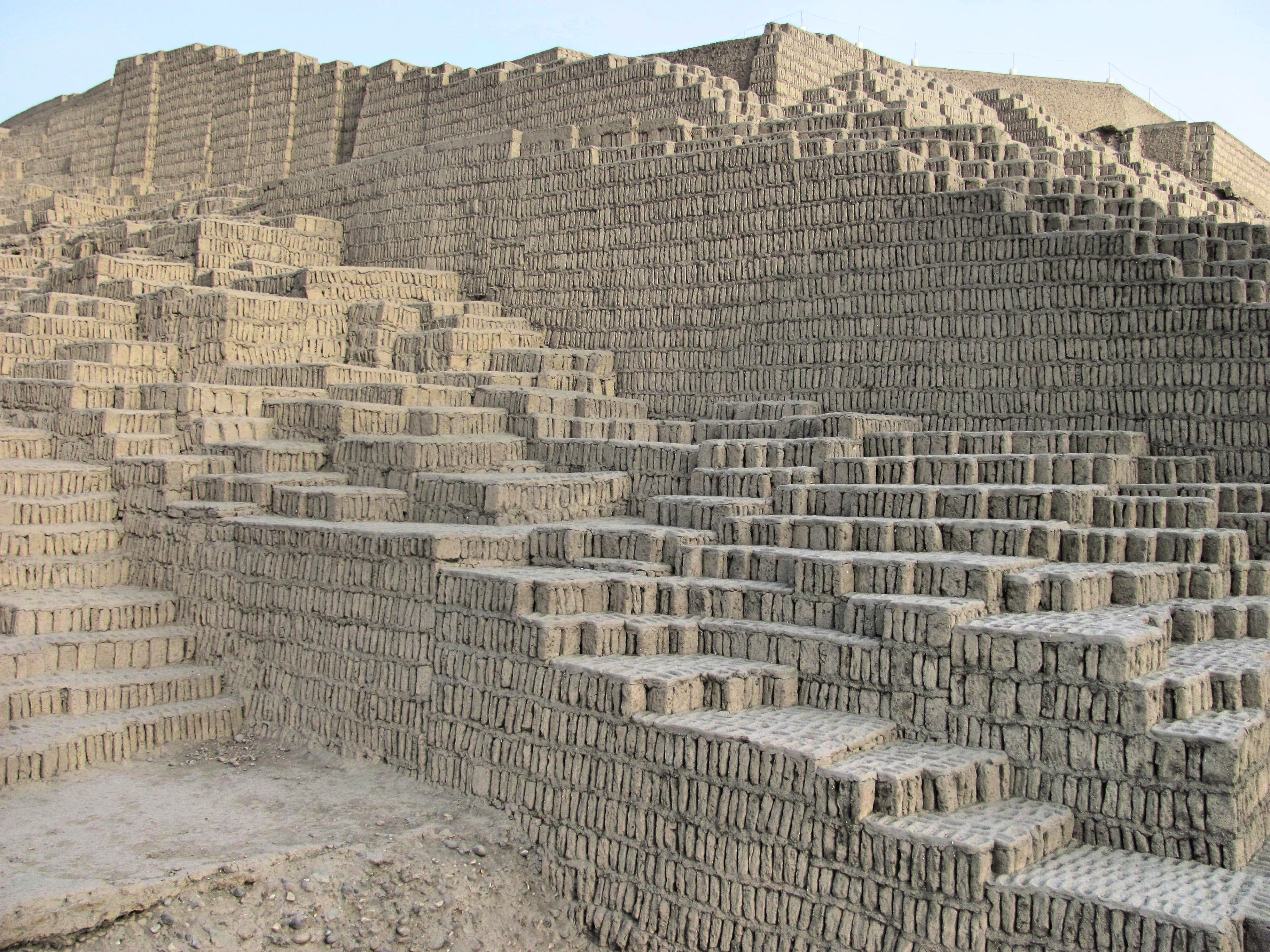
San Isidro
San Isidro is the area of the absolute upper-class. Lavish Hacienda’s are dotted between the many golf-courses and wide streets. But because most buildings feature high spiky walls, it is not a great area to walk around in and I do not recommend visiting. Unless you know someone that lives there of course;).
Barranco
The same cannot be said about Barranco. A small bohemian neighborhood with charismatic streets that host both ‘hip’ eateries and many art-galleries. Barranco is a lot quieter, smaller and more low-key and makes for a great half-day escape from the busy city. Just stroll-around, go to the beach and have a little bite in a place that looks nice. It does not have any real points of interest but that only adds to its charm.
– Eating and sleeping in Lima –
Eating
Lima is the culinary capital of South America and rightfully so. This is probably the only place in the world where you can eat a 10-course meal in a world-top 50 restaurant for around 100 bucks (which is incredible value for money!). If you are traveling on a shoestring there is still no denying the sophistication of the Lima cuisine. Every street-stall offers delicious fresh Ceviche (lime-marinated raw fish) and tasty Anticuchos (beef-skewers). Try El anano for great sandwiches and delicious fruitjuices in Miraflores and try the Ceviche in the Mercado Central in Central Lima.
Sleeping
We found out that Booking.com will consistently give you the best rates on hotels. To make finding the perfect spot a little easier we made a selection for Lima. Click the link below to find the best places to stay in Lima.Make sure to book in Miraflores!
– Practical Info –
When
December to April is the best time to visit since this is when Lima experiences daily highs of around 25 degrees Celsius combined with lots of sun. Around April until the end of October the city gets covered in a thick white fog which makes for quite a depressing sight.
In & Out
The only expensive taxi-ride that cannot be avoided is the one from the airport into Lima. Expect paying 60 soles or more. I would be impressed if you manage to haggle that down as I had no luck there. Lima’s international airport receives direct flights from most parts of the world and is situated about 20 minutes by cab.
Although there are buses going in the general direction, they do not stop at the airport, so if you are in a hurry this might not be the best option. Buses to Argentina, Ecuador, Bolivia and most destinations in Peru leave from the Gran Terminal de Terrestre which also is hard to reach if you try to avoid taking a taxi (luckily this will only set you back about 10 soles). Take in mind that not all bus companies leave form this terminal (Cruz Del Sur has its own terminal) so always check before you assume this is where you have to go.
– Things to take when traveling to Peru –
There are a few items that I would pop into my bag for a trip to Peru. Firstly, always take many layers of clothing with you. Being in the Andres means that the weather switches rapidly. Be prepared for both sunshine and rain. But more importantly, be prepared for rapid switches in temperature. Thermals and swimming shorts in the same daypack? In Peru its not as weird as it sounds.
Fjallraven trapper hat
Even in the coldest nights on the altiplano you won’t get cold ears while wearing this trapper hat. It’s simply not possible. The big advantage of trapper hats compared to beanies is that they warm up your whole head instead of just the top and they fit tightly around your head, meaning you wont lose it while mountaineering in the Andes. Fjallraven Kanken is a Swedish premium brand that uses sustainable materials. Also their products just look damn good. It’s a little investment, but one that’s worth it.
Thermals
Besides wearing a warm hat or beanie, the best addition to your travel wardrobe is skintight thermal underwear. Super comfy, light, small to pack and it transforms any normal pants into super warm isolated pants. I value thermal underwear over a thermal shirt because to warm up your upper body you can simply stack all the shirts you are carrying on top of each other while stacking multiple pants is harder. Also your legs are not used to this added layer so wearing thermals will work wonders on the ‘feel temperature’. LAPASA thermals are designed for travel and come in at a very good price.
Power bank
The usefulness of a power bank is self-explanatory. Being able to charge your phone, tablet, camera, GoPro or e-reader on the go has made traveling so much easier. I use this particular power bank over a year now and its just perfect. The 20,000mAh provides my IPhone with about 5 charges, the double port means I can charge my camera and phone at the same time (or be a life saver for the person sitting next to me) and the LED torch in the middle is super useful when you try to find something in your bag on the bus in the middle of the night. The display is useful as well and tells you a whole lot more about the current charge compared to ‘3 out of 5 lights left’. Oh and it comes in at HALF THE PRICE of a Anker power bank. I have yet to find its flaws.
Lonely Planet
Because its just the best compact travel guide out there. I always take a lonely planet with me for its practical information, background on certain sights and for when I find myself unexpectedly off the beaten path in search of accommodation for the night. For me this is still the best way to read up on a destinations in long haul bus rides. You don’t need internet or battery-life which even on a luxurious bus in Peru can really come in handy sometimes;)
